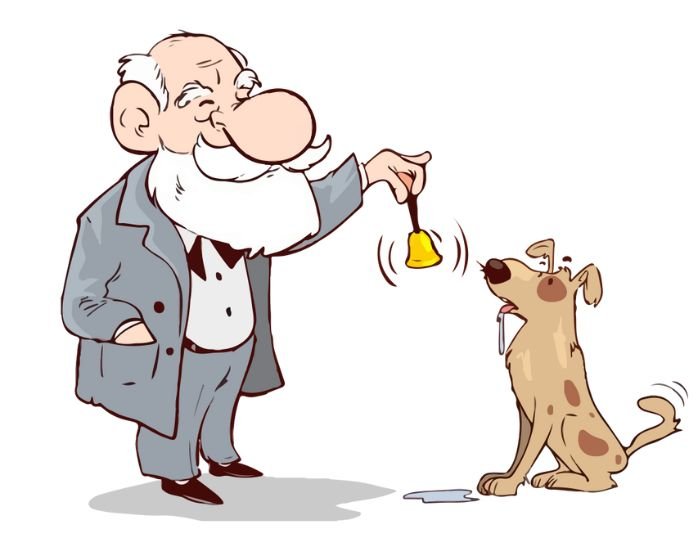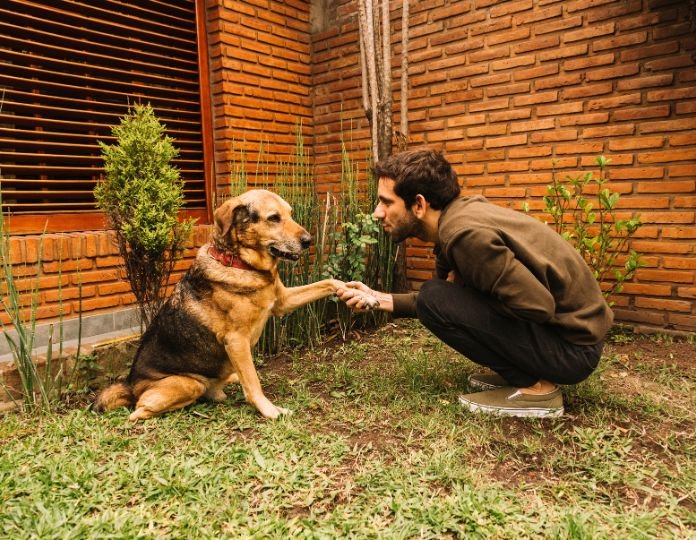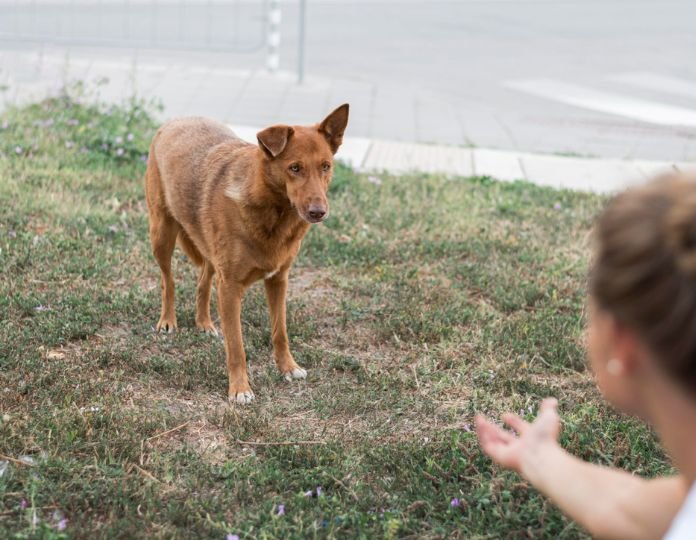Have you ever opened a packet of chips, and your dog, sleeping two rooms away, stares at you and slowly approaches you with their puppy eyes to have a bite? Cute, right? Dogs display multiple such behaviours and try to communicate in their manner. Hence, this is called Dog Psychology. It is defined as a study of learning how dogs think, behave, interact and are trained by humans.
Why do we keep pet dogs?
Initially, dogs are the descendants of wolves. Humans started petting dogs, for a variety of reasons like Hunting (For example, Beagles used to be great hunters of rabbits and hares), Protection (for example, in ancient Rome, Canes were used as guard dogs, Herding (for example, border Coolie), and had a mutual relationship).
Researchers led by Rudolph Schenkel discovered in 1947 that wolves that were captivated belonged to a social structure headed by a leader. Dogs, like humans, form hierarchical bonds with one another and view the humans (alpha) who domesticate them as partners in the pact.

Then came a major psychological concept- classical conditioning where humans learnt how to train dogs. Pavlov associated the ring of a bell, with the dog thinking food is going to arrive (hence measuring the dog’s salvia). Dog trainers use the same concept. “Shock collars” were used to prevent dogs from doing anything wrong, treats are given when they show good behaviour (giving a treat when they shake your hand when you command “handshake”.
This was further expanded by BF Skinner’s reinforcement and punishment concepts, where you reward the dog when they show good behaviour, spank them when they do something bad, take away their toy when they doesn’t listen to you, and pester them until they don’t eat their food. These all fall under positive and negative- reinforcements and punishments.
Hence, these are all studies done in the field of psychology. Hence, they help us understand dog psychology a little, its importance and its evolution over time.
Need for Dog Psychology
Owners can prevent behavioural issues and create conditions that satisfy their dog’s natural instincts by understanding their needs. Building deeper and more meaningful ties with their pets is possible for owners who comprehend their dogs’ behaviours. Understanding your dog’s communication style will enable you to identify whether your pet is fearful, anxious, at ease, or confident. By doing this, you may help your dog avoid circumstances that could be difficult for him. The welfare of a dog can be enhanced via behaviour management, which can also benefit the owners’ health and wellness.
Read More: What are Puppy Blues?
Psychology of Modern Dogs
Despite thousands of years of domestication, the psychology of modern domestic dogs still reflects many characteristics derived from their wild predecessors, especially wolves. They might, for instance, act submissive or dominant towards humans or other dogs to fit into a supposed “pack.” Domestic dogs do not need to hunt in packs to survive, unlike wolves which depend on pack cooperation to survive.
Wolves are fiercely territorial in the wild. Domestic dogs still exhibit signs of territoriality, such as marking their territory with urine or acting protectively towards their owners and home. This territorial tendency manifests as guarding property or barking at outsiders. Wolves have complex hunting techniques that include collaboration, stalking, and pursuing their prey. Domestic dogs may hunt in the form of fetching or tugging, or they may exhibit prey-drive behaviour such as chasing after small animals. These behaviours are more recreational than survival-based for many dogs, though.

Howling, growling, barking, and scent marking are some of the vocalizations and body language used by wolves to communicate. Both voice and physical language are important forms of communication for domestic dogs. To communicate with people and other dogs, they employ verbal cues like barking or whining, as well as tail movement and ear posture. Dogs engage in fetching, playfighting, and chasing as forms of interaction with people and other animals. Dogs can also decompress and pass the time through play, which is less typical in natural environments when energy is saved for survival tasks.
Read More: Why are Dogs Called ‘MAN’S BEST FRIEND’?
Bonding Between Dogs and Humans
Dogs and humans create strong emotional relationships, much like with newborns. According to attachment theory, dogs view their humans as “safe havens,” just like children turn to their parents in times of fear or confusion. Have you ever been followed by your dog like a fuzzy shadow? They are speaking from a secure attachment! While some dogs, the worried ones, go full soap opera when left alone, others are like, “Calm down, human, I know you’ll come back.” Less drama is produced with training. The love hormone, oxytocin, is released when you look into your dog’s eyes (insert dramatic music here). It’s a loving, trust-building feedback loop. Your dog may adore you for the kibble, but oxytocin is what keeps them coming back for longer after the treats run out.
Emotion and Cognition in Dogs
A vast array of emotions is felt by dogs, including happiness, fear, worry, love, and even jealousy. Research indicates that canines possess emotional intelligence comparable to that of a human kid between the ages of two and three. Dogs use their body language and facial expressions to convey their feelings. For example, they may wag their tails in happiness, growl in fear or rage, or twitch their ears in obedience. Dogs are sensitive to human emotions, according to research. They can sense our emotions and react appropriately, offering consolation in times of sadness or exhilaration in times of happiness. This capacity to “mirror” human emotions implies that dogs have some level of empathy for humans.

Dogs are remarkably adept at solving puzzles. They learn about their environment through observational learning—observing and imitating others—as well as trial-and-error learning. They are better at following human gestures than chimps, according to studies. Dogs learn by doing and receiving positive rewards, and they can recall individual events (episodic-like memory).
They have highly developed emotional intelligence if they can sense human feelings and modify their behaviour accordingly. Dogs’ ability to comprehend and respond to a wide range of cues, scenarios, and human emotions demonstrates the close relationship between emotions and cognition in canine behaviour.
Read More: The psychology of animal lovers
Psychology of Dogs
To better grasp, let’s look at an example.
Goal: How to teach your Dog to Open Doors
1. The Journey is Started by Curiosity
- Emotion: Seeing you leave the house with their favourite toy in hand, your dog watches you go. Let the FOMO (fear of missing out) and disappointment set in. A deep sigh is released as the ears fold back and the tail descends.
- Cognition: Your dog’s brain begins to function. They understand that when the door opens, wonderful things happen—like a walk, some activity, or a snack. The dog starts to associate the delight of freedom with the door handle.
2. Make trial and error attempts
- Emotion: Courage takes over. Your dog now has a slight tail wag and is full of optimism and resolve. They jump to adjust the handle. Nothing takes place. Angry feelings begin to surface.
- Cognitive: This is when learning via trial and error takes hold. Reiterating the behaviour, the dog tries pawing at the door, prodding it with its nose, and even barking at it—after all, barking is supposed to make things better.
3. Learning by Watching
- Emotions: A hint of curiosity mixed with irritation. Now, when you open the door, your dog becomes even more alert. With their eyes fixed on every detail, they sit with their ears raised. Your dog is going to discover that you are the master of the door trick.
- Cognition: This is the application of observational learning. Dogs are excellent mimics of actions they see. A thought flashes in their heads as they watch you grab the handle and pull.
4. The “Aha!” Experience
- Emotion: At last, the victorious moment! With a quick leap and precise pawing of the handle, your dog opens the door with a loud pop. Eternal happiness bursts forth! They race out feeling proud of themselves as the tail wags like it’s going to take off (hence, zoomies).
- Cognitive: Your dog has made the connections! They used observation, trial, and error to solve problems and acquire new skills by figuring out the door-opening mechanism.
5. Oh no! Unintentional Repercussions
- Emotion: Now and again, maybe a little mischief starts. Your dog has realized that ANY door can be opened. restroom? Not an issue. Refrigerator? Okay, let’s give that a go next. Their win in cognition suddenly becomes a bit of a struggle for you.
- Cognition: Dogs are problem solvers who also pick up lessons from their mistakes. If unlocking the door causes problems (or even a disgruntled person), they may reduce this behaviour—or continue, depending on how satisfying it is!
Read More: Pet and its Psychological Impacts on Parents
Does the Breed Matter?
Different dog breeds have unique behavioural patterns that are influenced by their original breeding goals and their genetic ancestry. Working dogs, such as German Shepherds and Border Collies, were developed for jobs requiring mental toughness, endurance, and concentration. They need a great deal of mental and physical stimulation because they are active and very easily trainable.
For instance, Border Collies, who are bred to herd, exhibit excellent problem-solving abilities and a strong desire for order. The main purpose of breeding toy breeds was companionship. In general, these dogs are loving and content to spend time with their owners. Nevertheless, they may experience “small dog syndrome,” in which they overcompensate for their size by acting aggressively or territorially, and they may be more prone to separation anxiety.
Hounds have a strong prey drive because they were bred for hunting. Beagles and other scent hounds are renowned for following their noses, often at the expense of obeying directions. Their independence and stubbornness often make training harder for them. Despite their tendency to roam due to their love of tracking, hounds are also gregarious and kind-hearted animals.

Training that is consistent with the innate preferences of each breed gives the best results. Creating an appropriate environment is just as essential. A dog’s energy levels, temperament, and reactions to stimuli are largely determined by genetics (nature), but environment and upbringing (nurture) also have a big impact (appropriate socialization from a young age, positive reinforcement, and exposure to different environments and stimuli). Owners can support their dogs in leading balanced, happy lives by acknowledging and respecting the innate characteristics of their breed and by giving suitable stimulation, training, and care.
Role of Dogs in Therapeutic Settings
Consider service dogs as emotional first aiders on four legs. They receive months of rigorous training to help with movement, identify seizures, or provide emotional support. Dogs, for example, can detect anxiety in their owners and offer a soothing presence simply by snuggling up to them or giving them a soft poke when needed. Service dogs assist their owners with everyday tasks like opening doors and picking up belongings.

According to a study, humans can boost their levels of the love hormone oxytocin and reduce their levels of the stress hormone cortisol by spending time with a therapy dog (from kids to veterans- benefits them all). Good boy + good hormones reduce stress. Particularly for older citizens or patients receiving long-term care, these furry therapists provide support in overcoming feelings of despair or loneliness. They provide unwavering affection, attention, and an incentive to wake up early (so you can take them for walks!). Studies indicate that individuals who own therapy dogs have improved emotional management, especially during stressful circumstances.
Read More: 10 Best Therapy Dogs for Depression and Anxiety
But their well-being is equally important!
Understanding dogs’ emotional and cognitive needs is crucial to ensuring their psychological well-being. To prevent stress, boredom, and anxiety, dogs require mental stimulation in the form of toys, challenges, and training, as well as social interaction. Understanding the thoughts and emotions of dogs promotes their welfare and results in longer, healthier lives.
For dogs, today’s metropolitan settings might be difficult. Dogs may exhibit destructive behaviours or anxiety as a result of busy owners, crowded, noisy streets, restricted access to open areas, and extended periods of time spent alone. These consequences are worse when one doesn’t exercise or socialize. Many dogs are also compelled to adjust to human schedules, frequently spending extended amounts of time indoors alone. Therefore, we must comprehend and adjust to a dog’s psychological wants to enhance their welfare and enable them to flourish even in contemporary, occasionally constrictive circumstances.
Read More: What Relation Does Humans And Animals Share?
Conclusion
Fostering happier and healthier connections between people and their canine friends requires an understanding of dog psychology. Dogs never stop surprising us with their complexity, from ancient characteristics like territoriality and pack behaviour to contemporary emotional intelligence and attachment. Dogs and human culture are inextricably linked, as evidenced by the development of dog psychology from early studies of conditioning to contemporary methods emphasizing emotional and cognitive well-being. We make sure that our dogs not only flourish but also provide unmatched companionship by honouring breed-specific characteristics, creating the ideal settings, and understanding their demands for mental health. Furthermore, their special ability to improve human mental health is highlighted by therapeutic tasks like service and therapy dogs. In the end, having a deeper emotional and cognitive knowledge of dogs promotes more rewarding relationships and lives.
References +
Albuquerque, N., & Resende, B. (2022). Dogs functionally respond to and use emotional information from human expressions. Evolutionary Human Sciences, 5. https://doi.org/10.1017/ehs.2022.57
American Kennel Club. (2017). American Kennel Club. American Kennel Club. https://www.akc.org/dog-breeds/
Catia Correia Caeiro, Guo, K., & Mills, D. S. (2023). Visual perception of emotion cues in dogs: a critical review of methodologies. 26(3), 727–754. https://doi.org/10.1007/s10071-023-01762-5
Garfield, S. (2021, January 24). Who’s a good boy? The unbreakable bond between humans and dogs. The Guardian. https://www.theguardian.com/lifeandstyle/2021/jan/24/who-is-a-good-boy-the-unbreakable-bond-between-humans-and-dogs
How a Dog’s Mind Really Works: Dog Psychology 101. (n.d.). Springnaturals.com. https://springnaturals.com/blogs/dog-cat-nutrition-blog/p-strong-how-a-dog-s-mind-really-works-dog-psychology-101-strong-p-p-p
Reisen, J. (2021, February 24). Service, working,therapy, emotional support dogs: Which is which? American Kennel Club. https://www.akc.org/expert-advice/training/service-working-therapy-emotional-support-dogs/
Reisen, J. (2022, January 13). Is the Human-Canine Bond Unique? American Kennel Club. https://www.akc.org/expert-advice/lifestyle/is-the-dog-human-bond-unique/
van Houtert, E. A. E., Endenburg, N., Rodenburg, T. B., & Vermetten, E. (2021). Do Service Dogs for Veterans with PTSD Mount a Cortisol Response in Response to Training? Animals, 11(3), 650. https://doi.org/10.3390/ani11030650
Vieira de Castro, A. C., Araújo, Â., Fonseca, A., & Olsson, I. A. S. (2021). Improving dog training methods: Efficacy and efficiency of reward and mixed training methods. PLOS ONE, 16(2), e0247321. https://doi.org/10.1371/journal.pone.0247321













Leave feedback about this